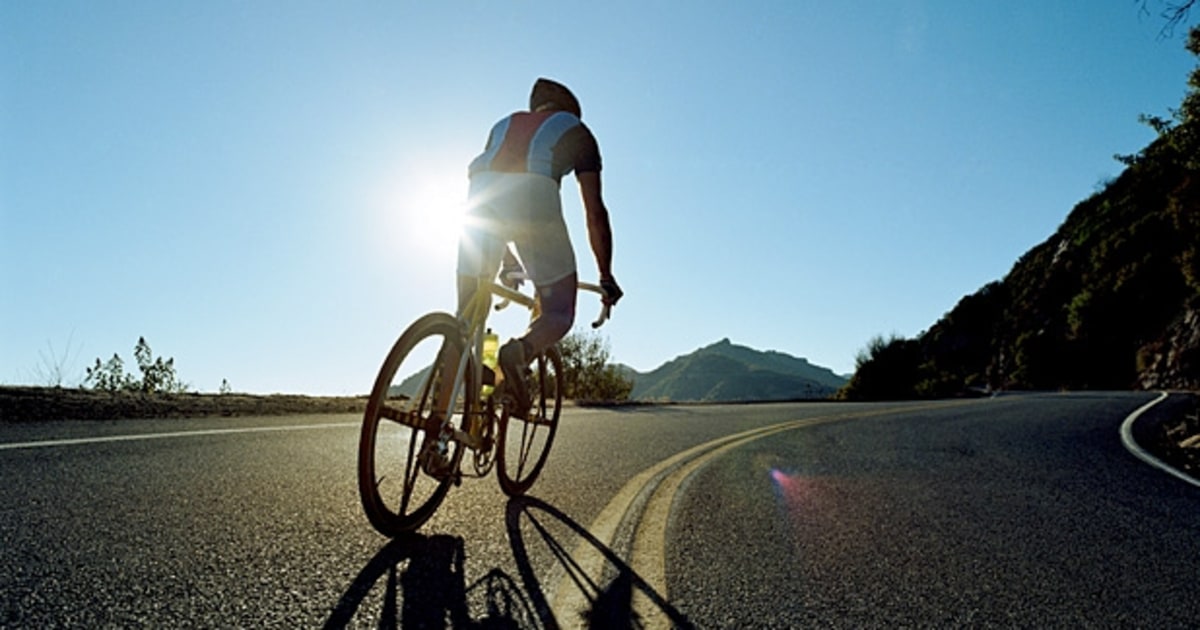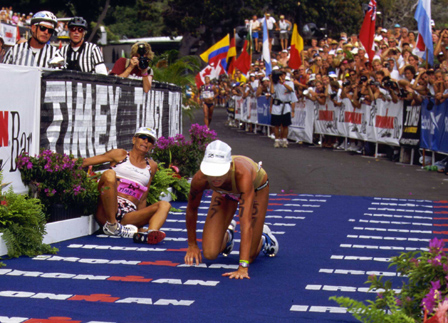Written By Dr. Nicholas Parton, DPT, MTC, CSCS 
You put in hours of base training and now your work has turned towards preparing for the racing season, so what do you do to avoid aches and pains that reduce your training? What do you do when you start experiencing pain? It’s every endurance athlete’s concern as their big race approaches – am I going to get sick or injured right before the race? Let’s consider some of steps to keep you as healthy as possible for this season and beyond.
- You’re In Pain and It’s Holding you Back Regularly
If pain is holding you back regularly, you should consider whether absolute rest, relative rest, or activity modification is necessary. Perhaps simply lightening up your training volume will be enough to allow recovery. Maybe activity modification or a rest period is needed because pain is altering your form during sport. For example, if you cannot perform the sport without a limp, a shortened or cut off stroke (arm or pedal), then you need to consider that trying to push through pain may only lengthen the time you are unable to train.
Here are some specific considerations for triathletes:
- Swimming: Rotator cuff pathology and shoulder impingement are the most common injuries I see among swimmers. The shoulder is a shallow “ball and socket” meaning that your muscles, tendons, joint capsule, and ligaments are what provide the stability. This allows a great deal of mobility at the shoulder, but it comes at the risk of instability or injury. Poor posture, musculoskeletal imbalances, weakness, or tightness can prevent the joint from moving smoothly through your required motion. We must also determine factors contributing to the injury such as cuff versus capsular tightness, imbalances in the neck or upper back, and the ability of the scapula to move and control the arm from its base on the thoracic spine.
- Cycling: Positioning is key with cycling. Most triathletes do their best to get down into their anatomy’s best, aerodynamic position. This requires full range hip flexion, lower back flexibility and stability, and control to provide a consistent and powerful pedal stroke. Additionally, bike fitting is very popular for triathletes and may be worth the few hundred dollars to allow you to move optimally – with less risk of injury and ultimately better performance.
- Running: Most complaints among triathletes relate to running. The amount of force applied from running provides a lot of the impetus for injury as does the change in form that you undergo as you fatigue. Hip and core stability including rotational control is crucial for down chain knee and ankle positioning stress control. Foot and ankle stability, which improves shock absorbing capacity, are crucial for up chain control and will protect your knees and hips. They all play together.
As you rehabilitate an injury, you should consider that pain in one region can affect balance in surrounding regions and in your body as a whole. Consequently, a holistic approach to rehab can be advantageous. Use your rehabilitation time to reassess your diet, core strength, and body-wide flexibility and use that the time to make any necessary improvements, since you will likely have some extra time from a reduction in specific pool, bike, or run training.
- You’re Feeling Aches and Pains but Can Still Train
As a Doctor of Physical Therapy who works with athletes, including endurance athletes who are placing a lot of volume on their bodies, I am often presented with athletes in this situation – feeling aches and pains but still able to train. I work to keep them training at the highest volume and intensity possible, while still reducing their symptoms. Almost any injury can be managed by absolute rest from that sport, but that really isn’t the point, is it? A “Time Heals All” approach can leave you out of shape and prone to future injuries if you don’t address the cause of symptoms. You may need to reduce volume and or intensity, but you don’t necessarily need to take time off to get healthy – you may be in this category if you have minor aches that occur during sport, but do not get worse with the sport and do not linger for days following participation in the sport.
How do you determine what is bothering you? There are several factors to consider:
- Location of symptoms: Is it close to a joint? Is it in the middle of a muscle? Does it feel deep or superficial?
- Timing of symptoms: Does it feel stiff to start and then loosen up, or does it come on late in longer workouts?
- Quality of symptoms: Does it do something besides ache? Burning? Tingling? Shooting?
- Aggravating or alleviating influences: Pay attention to what position you are in in when symptoms occurs and try to determine any specific movements that lead to the pain or reduce it.
Let’s consider a few types of injuries.
- Nerve injuries: Nerve irritations aren’t very common, but are sometimes present in the shoulder, elbow, buttocks, or feet of triathletes. If you experience an “off” sensation that includes numbness, tingling, burning, or shooting pain, you may have decreased nerve mobility. Remember that your nerves need to move along with your muscles and joints during each motion. Where are your symptoms? Use this knowledge to learn and to perform nerve mobility exercises (at the sake of length any individual inquiries will be answered separately).
- Muscle injuries: Muscular injury usually present with achiness, tightness, or pain during activation or contraction of a muscle. Is the length or strength of your muscle compromised? Posture, flexibility, stability, and overuse are factors that should be considered.
- Bone and joint injuries: Issues related to a bone or joint often present as aching, popping, or grinding in nature. In this case, you’ll need to consider how your movement patterns during activity may be affecting forces at your joints.
Regardless of the type of aches or pains you may experience, it is important to take care of it now rather than wait, in which case it could progress into something more serious and limiting to your training.
- You’re Healthy Now
Great! I’m glad you feel so well, so let’s keep it that way. Next time you swim, bike, or run take a survey of how you are feeling. If you feel any weird sensations or small aches and pains, now is the time to stop the momentum of a potential problem. For all triathletes, one of the best ways to stay healthy is to keep a log and to train at the correct level for your fitness. The 10% rule, a long standing guideline for run volume, can be followed for triathlon too, with your total volume coming from three different sports and potentially adjunct activities like lifting, yoga, and Pilates. Anatomical and physiological adaptations to training take a few weeks to catch up to the load of training you perform. One of the best ways to reduce upper or lower extremity injuries is to strengthen and improve mobility proximally. That means core, shoulder girdle, and hip/pelvic stability and endurance. Examples include thoracic rotation and side bending mobility, rotator cuff, and upper back strengthening for swimming; flexibility and strengthening at the hip and low back for cycling; rotational hip mobility and control; and core stabilization across all sports. It is important to remember that your body is a series of kinetic chains, so for any ache or pain, you should look up and down the chain one or two joint complexes to address any mobility, strength, or control deficits that could be affecting the painful area. As we’ve discussed, your knee won’t function well if your foot, ankle, hip, or low back aren’t all working together well too. Our joints, muscles, and nerves must all work together, as a team, to keep us moving effectively and efficiently. A regime of mobility/flexibility, strength/stability, and neuromuscular control exercises can help to address any musculoskeletal or neuromuscular imbalances and to keep your body tuned up for optimal performance.
As a final thought, this article is meant to get you thinking about your body and to become more cognizant of the different options you have to stay healthy. So eat your anti-inflammatory and balanced diet, do your strength, activation, and core exercises, stay flexible, and when in doubt…ask questions and get help.
Wishing you a healthy, fun, and fast season!
About the Author: Dr. Nicholas Parton, DPT, MTC, CSCS is a Doctor of Physical Therapy and Certified Strength and Conditioning Specialist in Colorado Springs, who works with athletes in their homes and in the field through Parton Physical Therapy (www.partonpt.com), spends his free time triathlon training with the support of TriSports.com, and enjoys getting lost in the mountains with his wife, Jessica.

